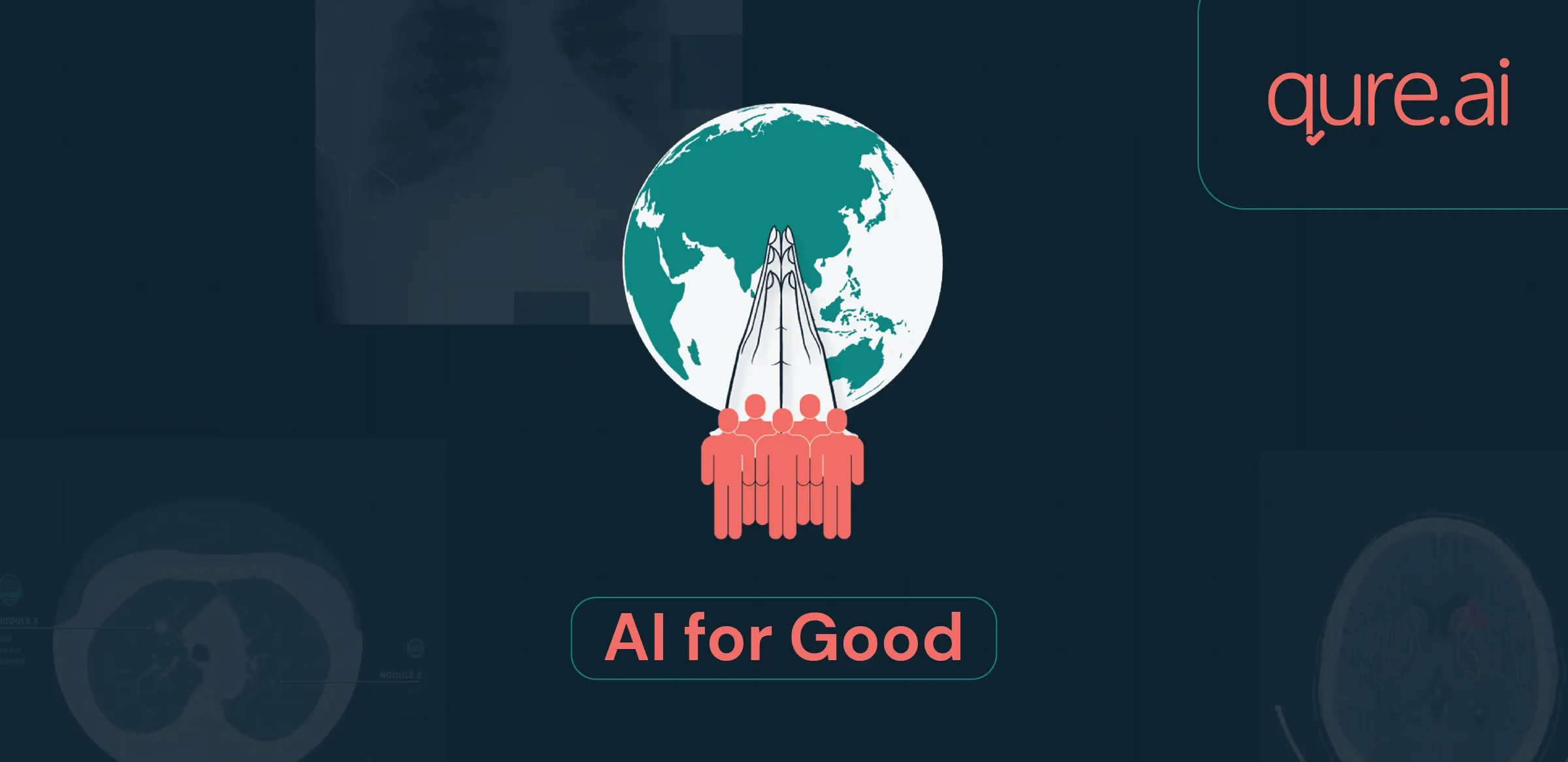Balancing act between technology and social responsibility

Back
In recent years, Artificial Intelligence (AI) has come to dominate conversations ranging from catastrophic-like scenarios to transformative potentials.
One field where AI is neither a speculative fantasy, nor a distant promise, is radiology.
From significant healthcare systems in the UK to rural clinics in Africa or Asia, radiology AI is changing the game clinically and socially. It addresses urgent challenges like radiologist shortages while enhancing clinical outcomes. Plus, its application transcends the clinical sphere, offering possibilities for broader societal impact - from early medical interventions to healthcare equity and patient trust.
AI has great promise to enhance healthcare and our understanding of what technology can achieve for humanity.
The Clinician’s Benefit: Alleviating Radiologist Workloads
Workforce well-being in radiology has been a mounting concern, with radiologist shortages expected to hit 40% by 2027, according to the Royal College of Radiologists. However, AI in radiology offers a potential solution by redistributing the burden.
A recent pilot study by Frimley Health NHS Foundation Trust in collaboration with Qure.ai provided compelling data: the qXR AI solution demonstrated a 99.7% accuracy in categorizing Chest X-rays (CXRs) as usual. This level of accuracy can potentially reduce a consultant radiologist's workload by up to 58%, translating into approximately 2 hours saved per day.
This is more than just a boon for the radiologists. It means they can focus their expertise on complex and critical cases, optimising healthcare's clinical and human elements.
In addition, a study conducted in Diagnostics processed 65,604 chest X-rays from June 2021 to March 2022. The study's results affirmed AI's prowess: a high negatively predicted value (NPV) of 98.9% was achieved. 'Negatively Predicted Value' here refers to the likelihood that a negative test result correctly identifies the absence of a condition. In simpler terms, if the AI deems an X-ray uncritical, there's a 98.9% chance it is uncritical. The study also found that the turnaround time for diagnosing X-rays decreased by about 40.63% when using AI.
Early Diagnosis, Early Action: A Boon for Public Health
As AI takes on more of the radiological workload, there's an opportunity to redefine the role of human radiologists to focus on more complex and nuanced aspects of patient care. This could include additional training for radiologists in areas like patient communication or interpreting AI-generated data.
By adapting the skills of the existing workforce, healthcare systems can create a synergistic human-AI interaction that enhances public health outcomes.
The notion that early diagnosis leads to better patient outcomes is elementary in medical practice. AI's ability to accurately flag critical results comes as a game-changer. The same qXR AI identified all cases of cancer, even catching nodules at risk for lung cancer that might traditionally go unnoticed.
Early intervention saves lives and considerably reduces the strain on healthcare resources. When illnesses are detected early, the need for invasive surgeries, long-term medication, and extended hospital stays diminishes.
Another study in the Advances in Biomedical and Health Sciences found qXR to have exceptionally high specificity and sensitivity rates.
Specificity (0.90) measures the AI's ability to correctly identify typical cases, while sensitivity (1) gauges its ability to detect criticalities. These rates outperform even trained radiologists, whose sensitivity rates fell between 0.74 and 0.76.
Regarding detecting malignant nodules, qXR's sensitivity ranged from 0.95 to 1.00, and specificity between 0.96 and 0.99, suggesting the AI's adeptness at identifying cancerous cells.
Bridging the Healthcare Gap: AI and Social Equity
While the application of AI in established healthcare systems has been discussed, its potential in remote or underprivileged regions is crucial for levelling-up social equity.
AI can make quality diagnostics accessible and affordable in areas lacking specialised radiologists. This democratisation doesn't just mean broadening healthcare access; it signifies an essential step towards health equity across different groups of people.
Healthcare inequities are striking even in advanced economies. In a study by The Health Foundation, it was reported that for most of their lives, people in the poorest areas of England, on average, have more diagnosed illness over 10 years earlier than those in the richest areas.
Socioeconomic status, geographical location, and ethnicity still affect health outcomes. AI offers an equalizing force. For instance, Qure’s efforts include deploying AI resources in low-and middle-income countries (LMIC)s like Nepal, where geographical and resource constraints severely limit healthcare access.
Beyond corporate social responsibility, AI radiology solutions directly relate to initiatives to close health disparity gaps in Western countries. The capabilities of AI in radiology can speed up patient screenings in community-based healthcare settings or play a role in ‘find and treat’ strategies making preventative care more widely accessible.
Trust in Technology: A Patient-Centric Approach
Patient trust is a complex issue, often mired by misinformation and scepticism on the general topic of AI. Initiatives to inform patients about the role of technology in their healthcare and robust protocols for data ethics will go a long way in fostering trust.
Performance monitoring of AI technologies, as emphasized by Dr. Neelan Das of East Kent Hospitals, will be critical to sustained success and public acceptance.
While AI won't wave a magic wand to resolve all issues in healthcare, it offers a step in the right direction. It allows medical professionals to engage more deeply with the aspects of care that require human expertise and empathy, thus improving outcomes.
As AI in radiology proves its efficacy and reliability, the challenge will be to integrate it responsibly into our healthcare systems to benefit clinicians and the broader society.